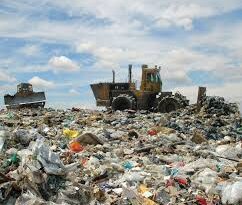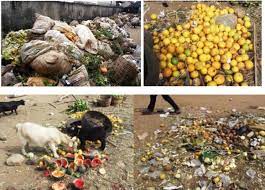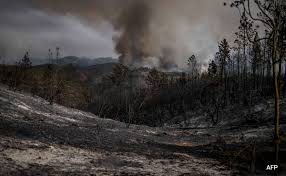Classes and Sources of Water Pollutants
Man is using more water in more and more ways. Although lakes, rivers and oceans have considerable ability to purify themselves by biological action, the quantities of waste discharged into water by man now frequently exceed this self-cleansing natural ability.
In addition, industry and agriculture now contribute large amounts of non-degradable pollutants. About half the population of the developed countries use sewers and the rest of the people discharge their wastes directly into septic tanks or directly into the ground or water. Of the wastes carried in domestic waters, one tenth is discharged raw and one quarter after only primary treatment.
The situation in the less developed countries is quite deplorable without the sewers or the water control technology of the developed countries. This unit highlights some classes of water pollutants and their effects on water quality.
Classes of Water Pollutants
Water pollution is a relative term. Water is considered polluted when its composition or state is directly or indirectly modified by human activity to such an extent, that it is less suitable for purposes it could have served in its natural state. Water pollution takes many forms. Some of these are:
Diseases–Causing Organisms: specifically parasites, bacteria and viruses which often enter water with human sewage
Synthetic Organic Compounds: in the form of industrial, household and agricultural chemicals, as well as water treatment chemicals added deliberately and the products formed by reaction of these with other contaminants
Inorganic Compound and Mineral Substances: including acids, mineral fibres such as asbestos and heavy metals discharged directly into water by certain mining and industrial operations and also entering water as fallout or in precipitation from the atmosphere.
Radioactive Substances: from commercial and military applications of nucleus energy
Oxygen–Demanding Wastes: namely organic compounds contained in sewage and some industrial effluents, whose biological or chemical degradation depletes dissolved oxygen
Plant Nutrient: such as nitrogen and phosphorous, from sewage and agriculture runoff
Sediments: from erosion caused by agriculture or construction
Thermal Discharge: from power plants and certain industrial facilities.
Sources of Water Pollutants
Most water pollution problems originate from land–based activities carried out within drainage basins, and not from water based activities such as shipping, boating and swimming.
Read Also : Solid Waste Management Complete Guide
Even without human activity to pollute the streams, stream water is never absolutely pure, because natural pollution is at work in form of soil erosion, deposition of leaves and animal waste, solution of minerals, etc. over a long stretch of time, a lake can die a natural death because of such pollution.

The natural process of eutrophication of environment with nutrients encourages the growth of algae and other plants, slowly turning a lake into a bog.
Agriculture and Drainage Basins: Agricultural areas contribute to the degradation of water quality in several ways. Excessive soil erosion increases a river’s sediments load.
Pesticides, fertilizers and animal wastes from fields and orchards, run off into streams or seep into groundwater. Regions from which contaminants are washed in this way are referred to as non-point sources of pollutants, since the contaminants they contribute come from many places but not from one or two concentrated sources.
In contrast to point sources, concentrated wastes from sewage treatment plants and industry – pollutants from non-point sources are especially difficult and expensive to control, because the concentration of pollutants is relatively low and the volumes enormous.
Urban-Industrial Areas and Drainage Basins: These basins contain the greatest number of point sources of pollutants. In the developed countries, the multitudes of wastes from such areas are no longer dumped directly into waterways. Nevertheless, modern day sewer systems are very important contributors to surface water pollution.
In cities, concretes, asphalt, and buildings render a large part of the urban surface impermeable to rainwater thereby increasing the volume of runoff. To prevent flooding, large storm sewer pipes lying under city streets channel this runoff, usually directly to the nearest river, lake or ocean.
During a rainstorm, the air and streets are washed, and many pollutants, e.g. hydraulic fluid, dirt, oil, radiator coolant, road salt, etc are carried into surface waters by storm sewer systems. In the less developed countries, control of surface runoff is virtually nil and this has caused several hardships to life and properties in many urban areas.
In the developed countries, smaller sewer pipes called sanitary sewers carry wastewaters from homes and commercial areas to treatment plants where it is treated and discharged into the nearest surface water. Some sewer systems employ a single pipe to transport both urban runoff and sewage to the treatment plant.
Such is called combined sewer. The treatment plant receives only domestic water during the dry weather. Dry heavy rains, however, could increase the volume of water flowing the sewer which is often exceeded by a hundred times amount that can be processed by the treatment plant. As a consequence, only a fraction of the sewage water is treated and the overflow – containing raw sewage – is bypassed and discharged directly into surface waters.
The wastewater of some industries is so toxic that municipal treatment plants are prohibited from treating it. Industries that do send their wastewater to municipal treatment must limit the level of potentially toxic substances.
Other factories install specialized water treatment systems that are designed to remove the particular type of pollutants in their effluent or liquid wastes. With the tightening of air and water quality standards, industries and municipalities have been forced to dispose more of the wastes in landfill sites.
Read Also : What is Wastewater and Sources of Wastewaters
These disposal systems do protect surface waters, but they do pose a potential threat to groundwater quality.
Industry also produces an increasingly important pollutant of an entirely different kind – heat. Power generation and some manufacturing processes use great quantities of water for cooling, and it goes back into streams warmer than it came out.
Power plants disgorging great masses of hot water can raise the stream temperature by ten or twenty degrees in the immediate vicinity of the plant.
Warmer water absorbs less oxygen and this slows down decomposition of organic matter, fish being cold blooded, cannot regulate their body temperatures and the additional heat upsets their life cycles; for example fish-eggs my hatch too soon.



